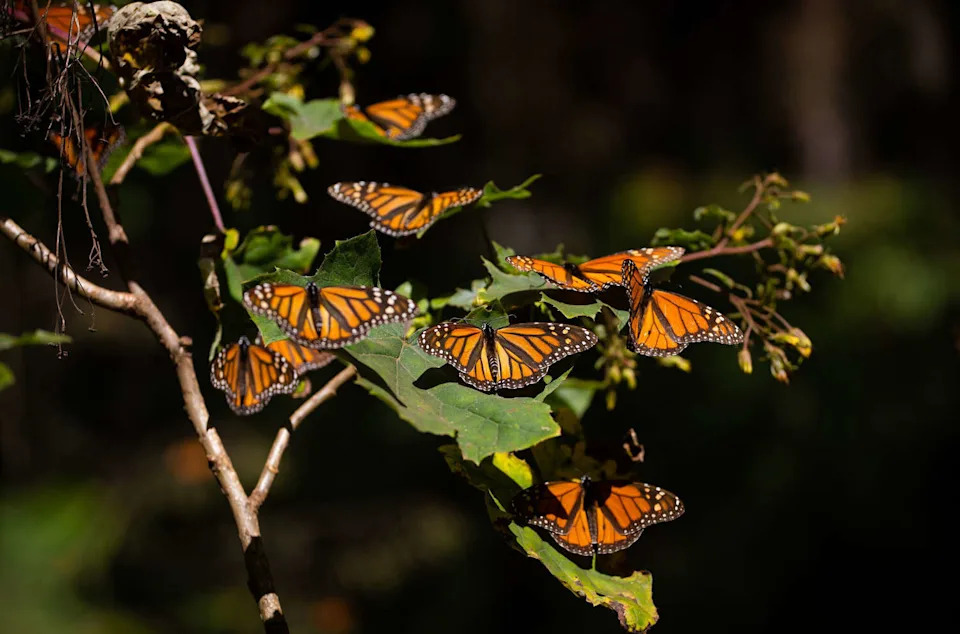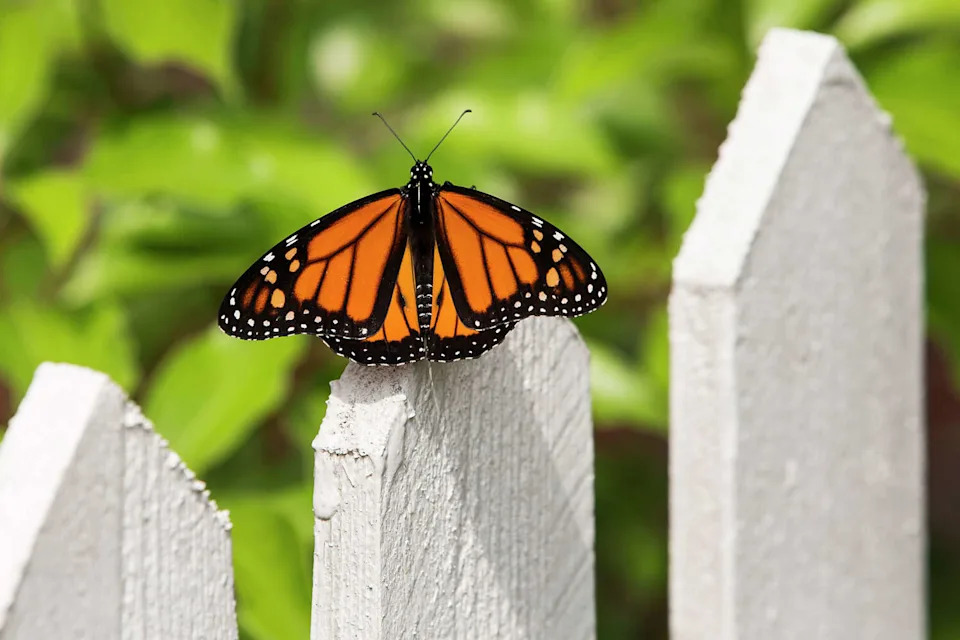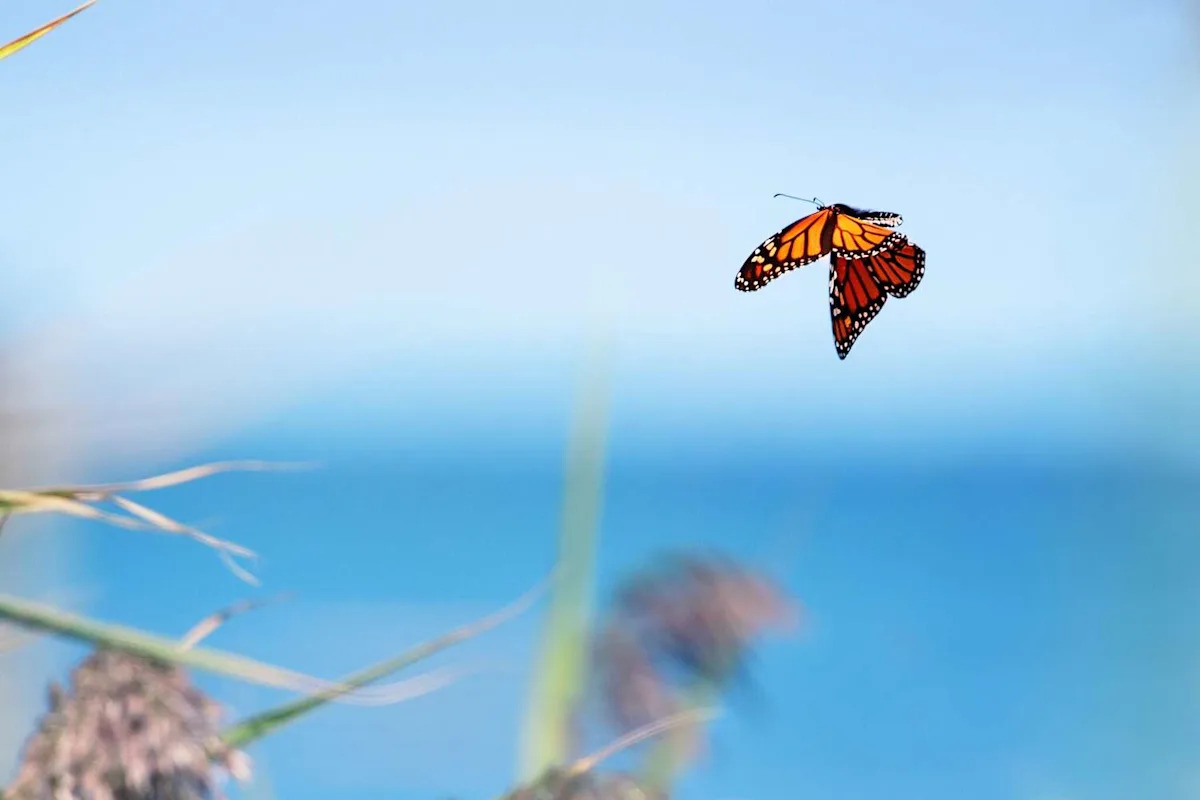It’s been an unusually hot fall in Texas, and that may explain why the iconic southbound march of the monarch butterfly appears to be slowing to a crawl.
In Central Texas’ “Funnel” corridor, the narrow flyway through which migrating monarch butterflies typically pass en route to Mexico, longtime trackers say this year has been eerily quiet. In the Hill Country, where mid-October is typically peak migration time, sightings are far below normal. At her annual birthday-tagging event on Oct. 13 near Mason, Texas, Butterfly Ranch founder Monika Maeckle observed only four monarchs over four days. “For the first time in two decades, the monarchs stood up my birthday bash as no-shows,” Maeckle wrote in a recent article.
Texas’ weather this year may offer a clue. After a relatively mild summer, September and October have brought persistent summer-like heat and dry conditions across much of the state. A stubborn heat dome has kept temperatures unseasonably high, stalling the cooling trigger monarchs rely on to begin their migration.
That delay-and the butterflies’ puzzling absence-mirrors new scientific findings about how heat disrupts monarch behavior. A recently-published study in Royal Society Open Science by researchers at the University of Florida found that warm autumn temperatures can derail the physiological switch that prepares monarchs for migration. When wild-caught monarchs were exposed to elevated “migratory” temperatures in the lab, they abandoned their usual reproductive dormancy, began mating more often, and even laid eggs in the absence of milkweed.

Unusually warm fall temperatures may be disrupting the iconic southbound journey of monarch butterflies. (Anadolu/Anadolu Agency via Getty Images)
“Warmer temperatures reduced male body condition, increased male mortality, and caused females to prematurely abandon their reproductive diapause,” the authors wrote. Those butterflies that reproduced early were less likely to survive the simulated overwintering period-evidence that heat can trigger fatal timing errors in the migration cycle.
The study offers a possible explanation for what’s happening across Texas this fall. Monarchs rely on dropping temperatures and seasonal cues to begin their southward flight. When those signals don’t arrive, some appear to linger in place or even begin breeding locally instead of continuing to Mexico-a pattern scientists call “migratory dropout.”
Researchers warn that such behavior is becoming increasingly common along the U.S. Gulf Coast and in the southwestern states, including Texas. “Since at least the mid-1960s, winter-breeding populations have arisen throughout the U.S. Gulf Coast and southwestern U.S., which may be in part due to a warming climate,” they noted.
Those changes align with what field observers are witnessing: a migration that’s both delayed and diminished. Ecology and evolutionary biologist D. Andre Green recently documented about 5,000 monarchs roosting in Bronte, West Texas-far west of the typical Hill Country corridor. “They just haven’t come east. They’re to the west. I’ve never seen a roost that size,” he told Maeckle, suggesting that cooler winds and temperatures farther west may be steering the insects away from heat-domed Central Texas.
Migration researcher Andy Davis, of the Odum School of Ecology at the University of Georgia, has also been tracking unusual patterns this fall. In a Friday post on his Facebook group, The Thoughtful Monarch, Davis noted that radio-tagged butterflies appear to be altering their path through Texas. “The monarchs that have reached Texas are actually not going in a straight line through the state, but they are choosing to go through the plains region,” he wrote. “This is consistent with some early work I had done in 2010 showing how monarchs do show a degree of ‘landscape’ selection in Texas, choosing to be more in more grassy regions.”

Fewer monarch butterflies are passing through Texas’ usual fall flyways this year. (Houston Chronicle/Hearst Newspap/Houston Chronicle via Getty Imag)
He added that this year’s satellite-tracked monarchs seem to be re-routing even before crossing into the state, “as if in anticipation of this route.” According to Davis, “somehow they know how to make a course-correction before arriving at the Texas border.” The pattern also matches current roost data from the citizen-science platform Journey North, which has reported the most recent clusters in the Plains region rather than Central Texas.
Chip Taylor, founder of Monarch Watch at the University of Kansas, said this year marks the latest migration he has ever witnessed. “Roosts in October in Kansas are unheard of,” he told Maeckle. “Roosts are always in the middle of September, not October.” Since 1975, he added, temperatures have increased roughly 1.2 degrees per decade, resulting in “really disruptive biologically.”
The migration’s outcome this season remains uncertain, with some monarchs adjusting their routes and others appearing slower than usual-a reminder of how unpredictable and delicate the species’ journey can be.
More Parks & Wildlife
Habitat | Houston Zoo pulls penguins from exhibit after safety scare
Watch out | Taking these items from Texas beaches could get you arrested
Conservation | How Bad Bunny accidentally became a ‘game-changer’ for Texas zoo
Hiking | New 100-mile trail could be Texas’ next big tourist magnet
For the latest and best from Chron, sign up for our daily newsletter here.
This article originally published at Are monarch butterflies losing their way through Texas?.

